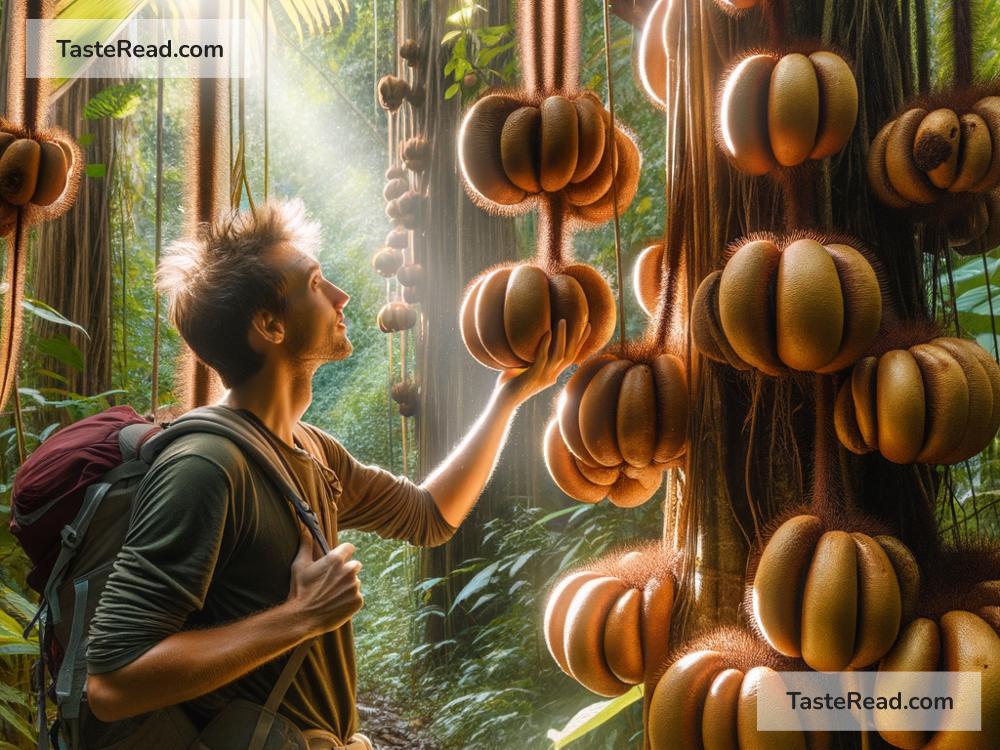The Legend of the Bread That Grows in Forests
Deep in untouched wildernesses, long before supermarkets and bakeries existed, people whispered tales about a magical bread that grew on trees. This mysterious bread was said to satisfy anyone’s hunger and bring joy to anyone lucky enough to find it. Though we now know bread doesn’t grow in forests, the legend of the “Bread Tree” has fascinated generations, sparking imaginations and connecting people through storytelling.
Let’s dive into this curious tale, explore its origins, and uncover the deeper meaning hidden behind this magical bread from the forests.
The Legend of the Bread Tree
According to the story, the Bread Tree was no ordinary tree—it was a gift from nature, planted ages ago by mystical forces or benevolent beings. Its bountiful branches carried golden, fluffy bread that was soft like clouds and smelled like warmth and happiness. Unlike regular bread, this tree’s bread required no kneading, baking, or grinding of grains. It appeared fully formed in perfect loaves, ready to eat.
The forest was said to guard its secret closely. Only those pure of heart, gentle in spirit, or truly in need could stumble upon the Bread Tree. Imagine a weary traveler wandering through towering woods, lost and on the brink of despair. Out of nowhere, they would suddenly find a shining tree covered in loaves of bread. The bread would nourish their body, give them strength, and guide them out of the forest.
In some versions of the story, the tree also had magic properties. The bread could heal illnesses, restore energy, or bring joy to those who were sad. For some, eating this bread even revealed the wisdom of the forest, giving them a deeper understanding of the natural world and life’s mysteries.
Where Did This Story Come From?
The legend of the bread that grows in forests is not tied to just one culture or place. In fact, similar tales appear in various parts of the world, often with slightly different versions depending on the tradition.
-
Polynesia: The Breadfruit tree, found in tropical regions, may have inspired some of these legends. Breadfruit is a large, starchy fruit that has been a vital food source for many island communities. When cooked, it has a texture similar to fresh bread. To people unfamiliar with breadfruit, this strange plant might have seemed magical.
-
European Folktales: In medieval Europe, people often imagined enchanted forests filled with miraculous things like food that grew on trees or springs that poured wine. These stories often reflected their dreams of abundance during times of famine or hardship.
-
Mythological Archetypes: Across cultures, forests are often seen as places of mystery and transformation. A magical tree providing bread aligns with ancient themes of nature providing for humanity and teaching lessons of gratitude, humility, and harmony.
Although the specifics vary, the concept is universal: nature has incredible power and wisdom, capable of providing not just physical sustenance but spiritual nourishment.
Could Bread Really Grow in Forests?
While the Bread Tree remains a myth, some aspects of the story aren’t too far-fetched. People have always relied on forests and trees to provide food, and many tree-grown fruits and nuts serve as staples in diets around the world. Breadfruit, mentioned earlier, could easily be mistaken for bread due to its name and appearance.
However, baking bread as we know it involves human effort. From grinding grains to mixing dough to baking it, bread reflects human creativity and the ability to transform raw materials into something nourishing and delightful. A tree that grows ready-made bread may not exist, but the legend serves as a reminder of how deeply connected people are to nature and food.
The Deeper Meaning of the Legend
At its heart, the legend of the Bread Tree isn’t just about food—it’s about hope, kindness, and the belief that nature can provide for our most basic needs. Here are some lessons we can learn from the story:
-
Gratitude for Nature: The idea of food growing magically on trees reminds us of the importance of respecting and caring for the earth. Nature already provides us with an abundance of resources, and it’s up to us to use them responsibly.
-
Generosity and Sharing: In many versions of the legend, the Bread Tree offered food to the needy, emphasizing the value of sharing with others and being compassionate.
-
Hope in Hard Times: The story inspires hope, especially for those facing struggles. It carries a message that even when life feels difficult, unexpected help may come when it’s needed most.
-
The Magic Within Ordinary Things: Bread seems simple, but it’s a universal symbol of nourishment, community, and comfort. The story reminds us to find magic in the everyday things that sustain us.
Why Do We Love Stories Like These?
Humans are natural storytellers. Legends like the Bread Tree allow us to dream of worlds where hunger doesn’t exist, kindness is rewarded, and ordinary objects—like bread—become extraordinary gifts. These stories bring comfort to our hearts, teach us valuable lessons, and ignite our imagination.
Although the Bread Tree may never have existed in reality, its story lives on, reminding us to value nature, share what we have, and hold onto wonder. Maybe the next time you walk through a forest, you’ll find yourself pausing for a moment to imagine bread growing on trees. And who knows? Perhaps the Bread Tree exists in some magical corner of the world, waiting for a pure heart to discover it.


